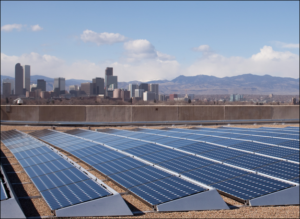 Earlier this week, the Virginia Senate shut down a bid by Sen. Chap Peterson, D-Fairfax, to revoke the rate freeze on Dominion Virginia Power’s and Appalachian Power’s electricity rates. But the battle over electric rates is far from over. The contest now moves to the Virginia Supreme Court.
Earlier this week, the Virginia Senate shut down a bid by Sen. Chap Peterson, D-Fairfax, to revoke the rate freeze on Dominion Virginia Power’s and Appalachian Power’s electricity rates. But the battle over electric rates is far from over. The contest now moves to the Virginia Supreme Court.
Today is the deadline for foes to submit legal briefs in a case filed by the Old Dominion Committee for Fair Utility Rates. The case challenges a 2015 law that was enacted shortly after the Environmental Protection Agency (EPA) announced details of its Clean Power Plan for cutting carbon dioxide emissions in the electric power industry. State Corporation Commission staff had estimated that the new regulations could cost Dominion rate payers between $5.5 billion to $6 billion, but no one knew for sure, so lawmakers cobbled together a bill that would freeze base rates through 2019.
Proponents said the idea was for Dominion to absorb the risk for higher costs stemming from the regulation in exchange for rate stability. But critics say it was a cover for Dominion and Apco to lock in excessive rates.
Critics have become even more vocal now as Donald Trump prepares to enter the White House. The president-elected has pledged to kill the Clean Power Plan. If he succeeds, the justification for the rate freeze will disappear.
Ken Cuccinelli, a former Republican attorney general, contends that Dominion and Apco took advantage of the agitation over the Clean Power Plan to get a law enacted that guaranteed excessive rates for years without providing any real protection to rate payers. Working with another former AG, Andrew Miller, he argues that the law is constitutionally dubious because the General Assembly usurped the role of the State Corporation Commission to set electric rates.
Dominion responds that state Constitution clearly states that the SCC power to set rates is subject to “such criteria and other requirements” as set by law. Company lawyers have cited six instances in the past two decades in which the General Assembly either capped electricity rates or defined how rates would be set, all without constitutional challenges. Furthermore, says company spokesman David Botkins, consumers have not been harmed. The average monthly residential bill in January 2017 is 3.6% lower than it was two years ago when the law was enacted.
There are four categories of electric rates in Virginia, Cuccinelli explains. One is the “base” rate, which covers most operating costs and accounts for about half the electric bill. A second is a fuel-adjustment clause, which adjusts charges for coal, natural gas, and nuclear fuel as prices move up and down. A third is a seldomly invoked emergency clause to reimburse electric companies for clean-up costs associated with storms, hurricanes and natural disasters. And the fourth is a rate-adjustment clause (RAC), which allows power companies to recover costs associated with new construction and other major capital expenditures, such as those required to comply with new federal regulations.
In a scenario in which Dominion was forced to shut down its Chesterfield coal-fired plant, denied licenses to extend the life of its nuclear plants and required to replace the capacity with solar, Dominion could recover the cost of multibillion-dollar capital expenditures through a Rate Adjustment Clause.
A second reason the 2015 rate-freeze law was bogus, says Cuccinelli, is that the Clean Power Plan was not scheduled to go into effect until 2022 — when the rate freeze expires. “The costs don’t even hit during the time addressed in the bill.”
Botkins responds that the rate freeze has protected rate payers against a variety of costs that would have been charged to them otherwise. The company ate tens of millions of dollars in clean-up costs from Hurricane Matthew, the ninth most costly storm in the company’s history. Citing another instance, he says, when 250,000 customers in Central Virginia lost power in a windstorm, “We worked around the clock. We absorbed those costs.”
The 2015 law also provided for a $57 million infusion into Dominion’s statewide weatherization program for low-income Virginians. And it committed the company to build 400 megawatts of solar power, which it is in the process of fulfilling, Botkins said. Just last week the company announced that it had completed work on three solar facilities in Virginia capable of producing 56 megawatts of electricity.
Addressing Cuccinelli’s argument that the costs of the Clean Power Plan wouldn’t hit rate payers until 2022, Botkins said that was unlikely. “You have to prepare for these things in advance. You can’t flip a switch and start complying.”
Cuccinelli is not impressed by the miscellaneous costs that Dominion has covered. SCC staff had determined before the rate freeze that the company was generating excess profits. The rate freeze cemented those profits into place for seven years. Paying for big storms that cost $100 million every ten years is a small risk compared to locking in a billion dollars in excess profits, he says. “Short of Noah’s flood, there will not be costs absorbed by utilities to offset the massive profits locked in” by the 2015 law.
Attorney General Mark Herring says the law is constitutional, says Botkins. “Virginia has an energy plan, and it’s working well. Low rates, superior reliability, and cleaner air than ever before — all to the benefit of our customers. With all the regulatory uncertainty still swirling in Washington, now is not the time for political grandstanding at the expense of Virginia’s energy future.”


